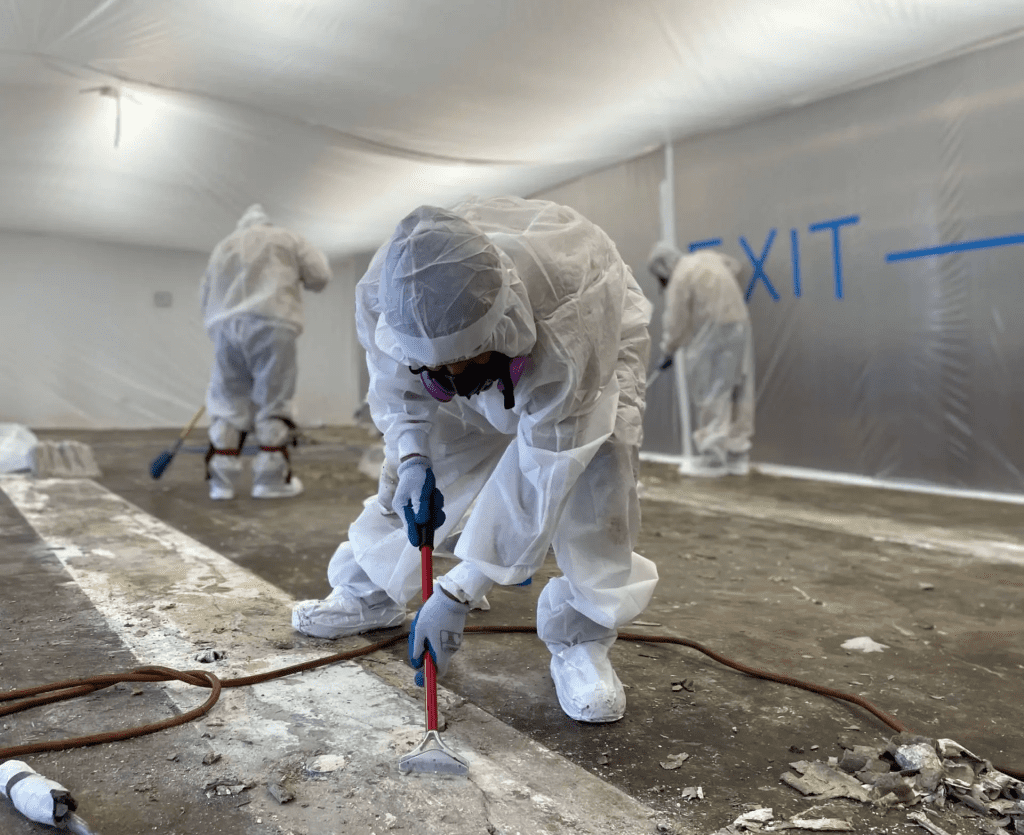Understanding Asbestos and Its Hidden Dangers
Asbestos is a naturally occurring mineral that was once praised for its remarkable properties like fire resistance, durability, and insulating power. For decades, it was widely used in the construction of homes, offices, schools, and industrial buildings. However, despite its usefulness, it was later discovered that asbestos exposure can lead to severe health complications, making it a dangerous material to be around especially when disturbed.
For homeowners and renovation professionals, a key concern is being able to identify the presence of asbestos. But the question remains: What does asbestos look like? The answer is not simple. Asbestos comes in several forms, and its appearance can vary depending on its type, condition, and the materials it’s mixed with.
The Different Types of Asbestos and Their Appearance
There are six known types of asbestos, all of which fall into two main mineral families serpentine and amphibole. The most common form found in buildings is chrysotile, often referred to as white asbestos. It usually appears as white, curly fibers that resemble fine cotton or wool. The amphibole group includes more dangerous forms like amosite (brown asbestos) and crocidolite (blue asbestos), which have straighter, needle-like fibers that are more brittle and more easily airborne when disturbed.
Chrysotile asbestos typically has a softer, silky appearance, while amosite and crocidolite appear harsher and more splintery. The color and texture of the fibers can sometimes give clues, but asbestos is often mixed with other substances, which can mask its visual traits. That’s why it’s incredibly important not to rely solely on appearance when trying to identify asbestos.
What Asbestos Looks Like in Its Raw and Processed Form
In its raw, unprocessed form, asbestos is found embedded in rock and appears as a fibrous mineral with a shiny, hair-like texture. The fibers can be pulled apart into fluffy tufts, which can look deceptively harmless. These natural fibers are soft to the touch, and when rubbed between the fingers, they often crumble into a fine, dusty powder which is precisely what makes asbestos so hazardous when inhaled.
Once processed and incorporated into building materials, asbestos takes on many different appearances. It can be sprayed onto walls and ceilings, mixed into cement, woven into insulation blankets, or compressed into tiles and panels. These variations make it difficult to identify asbestos by looks alone. In many cases, asbestos-containing materials look like any other building component flat, gray panels, painted ceiling textures, or ordinary-looking tiles.
How Asbestos Was Used in Homes and What It May Look Like Today
Older homes built before the 1980s are especially likely to contain asbestos-based materials, particularly in areas like insulation, ceiling and floor tiles, wall panels, and roofing. In ceilings, asbestos often appears in the form of textured coatings the so called “popcorn ceilings.” These have a rough, lumpy surface that can appear white, off white, or cream-colored. They may also be painted, further hiding any trace of asbestos.
In flooring, asbestos tiles typically appear as 9-inch square tiles, though some 12-inch variants were also manufactured. These tiles were produced in colors such as black, red, dark green, and brown, often with a marbled or speckled design. What makes them especially tricky to identify is the fact that many homes still have these tiles intact and in good condition, giving no obvious sign of danger.
Pipes and ductwork in basements and crawl spaces are another common area where asbestos may be present. The insulation around these pipes may look like white or gray corrugated paper, plaster-like wrapping, or cloth. Over time, the material may become brittle, cracked, or flakey, releasing dangerous fibers into the air if disturbed.
Why Visual Identification of Asbestos is Not Reliable
Despite the visual hints asbestos may give, the reality is that you cannot confirm asbestos presence by looks alone. Many non asbestos materials were made to look and function similarly. For example, fiber cement products made after the asbestos ban often look nearly identical to earlier, hazardous versions. The same is true for vinyl tiles and insulation wraps.
Because of this, laboratory testing is the only reliable method to confirm if a material contains asbestos. This typically involves collecting a small sample and sending it to a certified lab where experts can perform microscopy analysis to detect the fibers.
Attempting to test or remove suspected asbestos on your own is highly discouraged. Even a small disturbance can release thousands of microscopic fibers into the air, posing serious health risks to anyone nearby. Always consult a licensed asbestos inspector or abatement specialist when you suspect asbestos in your environment.
Common Materials That May Contain Hidden Asbestos
Many common household materials, especially in homes built before 1980, may contain hidden asbestos. These include but are not limited to pipe insulation, vinyl floor tiles, wall and ceiling insulation, roofing shingles, attic insulation, plaster walls, cement panels, and even some adhesives and paints.
These materials may not look dangerous on the surface. For instance, a piece of wallboard might appear solid and safe but could contain embedded asbestos fibers that become airborne when drilled or sanded. Cement roofing shingles may look like harmless slate but may crumble easily over time and pose inhalation risks. That’s why knowledge of historical construction practices is as essential as knowing the visual appearance of asbestos.
Can You See Asbestos with the Naked Eye?
Although asbestos fibers are microscopic typically invisible to the naked eye the materials they are mixed into are usually visible. However, you can’t see whether those materials are dangerous just by looking at them. Some signs may include crumbling edges, visible fluffy fibers poking out of insulation, or a worn appearance on old ceiling or floor tiles. Yet, these signs can also appear in non-asbestos products, so never assume a material is safe unless it has been tested.
If your home contains materials that are aging or deteriorating and were installed before asbestos regulations were enacted, it’s best to treat them as potentially hazardous and proceed with caution. In such cases, asbestos testing kits or hiring a professional inspector are the safest options.
Asbestos Lookalikes That Can Confuse You
Modern construction materials often mimic the look of older products that once contained asbestos. This leads to confusion and sometimes dangerous assumptions. Non-asbestos vinyl floor tiles, fiberglass insulation, and modern cement boards can look exactly like asbestos-containing versions. While they may pose no health risk, their similar appearance means you should never rely on guesswork. When in doubt, always opt for professional analysis before starting any renovation or demolition work.
The Importance of Early Detection and Professional Help
Early detection of asbestos-containing materials can save lives. If you suspect your home or workplace may have asbestos, especially if you’re planning any renovation or repair, getting a professional asbestos inspection should be your top priority. Professionals have the training, tools, and protective gear to handle asbestos safely and legally.
Attempting to remove asbestos without proper safety measures is dangerous and illegal in many areas. It not only puts your health at risk but can contaminate your entire home, leading to costly remediation efforts.
Conclusion: What Does Asbestos Look Like?
The answer to the question “What does asbestos look like?” is complex because asbestos doesn’t have a single appearance. It can be white, gray, brown, or blue, and it may be fluffy, solid, or fibrous. It can hide in your ceiling, floor, walls, pipes, or attic without any obvious visual warning. That’s why visual inspection alone is not enough to confirm the presence of asbestos.
If you live in or work in a building built before the 1980s, especially one with materials like old tiles, pipe insulation, textured ceilings, or cement panels, there’s a chance that asbestos is present. The only way to know for sure is to consult professionals and have the materials tested in a lab. Until then, treat any suspicious material with care and assume it could be hazardous.




